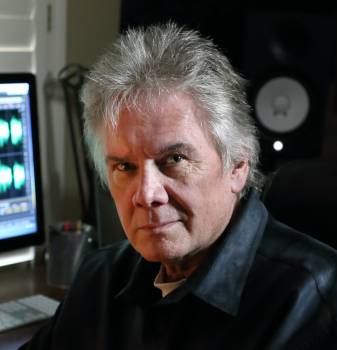|
VOICE ACTING Five Tips For Interpreting Voice Over Reads - From Directions In The Copy March 4, 2016  By Dan Hurst By Dan HurstVoice Actor I had a session with a new client recently. I must tell you that I have a man crush on this guy. Let me explain. While setting up his intent and ideas for the copy he said, "I know I'm not a writer for broadcast or voice work. So you need to help me out here." Actually, the copy was quite good. Very creative. And as with most creative copy, there is a lot of room for interpretation. So as I was going through the copy to analyze it and decide what approach I was going to take, I asked him a few questions about it. His response was, "Hey you're the professional voice, help me say it the best way to make this work." Now, that doesn't often happen in this business. I consider creative writers to be geniuses. Seriously! Their penchant for weaving words and colors of thought amaze me. WRITE FOR 'BROADCAST' - NOT PRINT However, sometimes they tend to write for print, not broadcast. And I'm using broadcast in the very loose sense as anything that is not print, but requires a voice. Print writing generally translates very well into voice. But when there are time restrictions or intents that require very specific voice interpretations, the writing has to be a little different. Let’s face it; print has the advantage of being able to explain the intent. For example, "Sure,” he said sarcastically.Obviously, types of copy will vary. Commercial copy is very different from corporate narration. eLearning is quite different from IVR. LOOK FOR DIRECTIONS But when you are dealing with creative writing (generally commercials or promos, or audiobooks), what do you do when you have little or no direction on the read? Look for the directions in the copy. Here’s a great trick: Record the copy with absolutely no interpretation whatsoever; just a simple, moderate read of the words. Then go back and listen to it. What needs to change? And why?WHAT TO CONSIDER Here are five considerations to help you discover, define and deliver your version of the script. 1. Words are choices. Writers usually choose their words carefully. Intentionally. For that reason alone, it is critical to consider why each word was chosen. Is there meaning in that word? Why the combination of words? Is there meaning in the structure of the sentence? Is there a pattern? Is there a choice of words that would indicate style or character? 2. Find the turn. Usually, every commercial has a turn; a shift in intensity or interpretation. For example, the copy might start with a humorous or silly bent, and at some point switch to a more serious intent to make a statement. Follow that lead. 3. Label the style. Words sometimes reflect eras. For example, what is the difference in something that is "rad” versus something that is "boss?” The words reflect different eras; perhaps different attitudes and interpretations. 4. Focus on the words that modify. This is a key element for good interpretation. Most voice talents focus on what are often referred to as "power words.” Those are the words our eyes are drawn to when we are reading the copy. For example, read this line out loud before you read the next paragraph: He ran as fast as he could out of the burning house.Most talents will read that line this way: "He RAN as fast as he could out of the BURNING house.” The problem with that interpretation is that those words don’t need emphasis. The listener will automatically emphasize those words in his/her brain. That interpretation misses the conversational aspect of that line, as well as the urgency. By that I mean that in a normal conversation you would not say it that way. Picture yourself in a state of agitation and stress telling a reporter that story while standing out on the sidewalk while the firefighters continue to battle the fire. How would you say it? More than likely you would say it as, "He ran AS FAST AS HE COULD out of the burning house.” Focus on adjectives and adverbs. They are what color a sentence. But even then, don’t over do it. 5. Quit projecting. This is a throwback to the old acting training we got. Remember when Mrs. Jones would holler at you in the middle of play practice, "Project! You’ve got to project to the back of the auditorium!” In voice over work you usually don’t need to project unless it’s part of a character. You’ve got a microphone. Let the mic do its job. Instead of trying to tell the story to someone sitting in the back of the room, try telling it as if you were speaking right into the ear of your best friend standing next to you. NEW CLIENT'S SESSION QUICK Back to my new client. I used these elements to interpret and deliver his copy. One take and a safety later, the session was done. And the client was thrilled. In my journalism classes in college, my professor would often say, "Use an economy of words.” In VO work we need to learn to use an economy of expression. It is not your job to create emotion or to interpret the story for the listener. Let the listeners draw their own conclusions and picture the story in their head. --------------- ABOUT DAN Dan (Daniel Eduardo) Hurst is an experienced bilingual (English and Spanish) voice talent operating out of the Kansas City area. His business now extends internationally, with clients including Maserati, Boehringer Ingelheim, British Petroleum, Kimberly-Clark, McDonalds, Volkswagen, Telemundo International, Shell, Hallmark, TransCanada, Walmart and many more. When he’s not working, he spends his time cheering for losing sports teams and getting kicked off of golf courses. Email: danhurst@danhurst.com Web: www.DanHurst.com |
As of the NEW website launch, 03/22/2012


.png)







Advice I find very useful.
Hubert